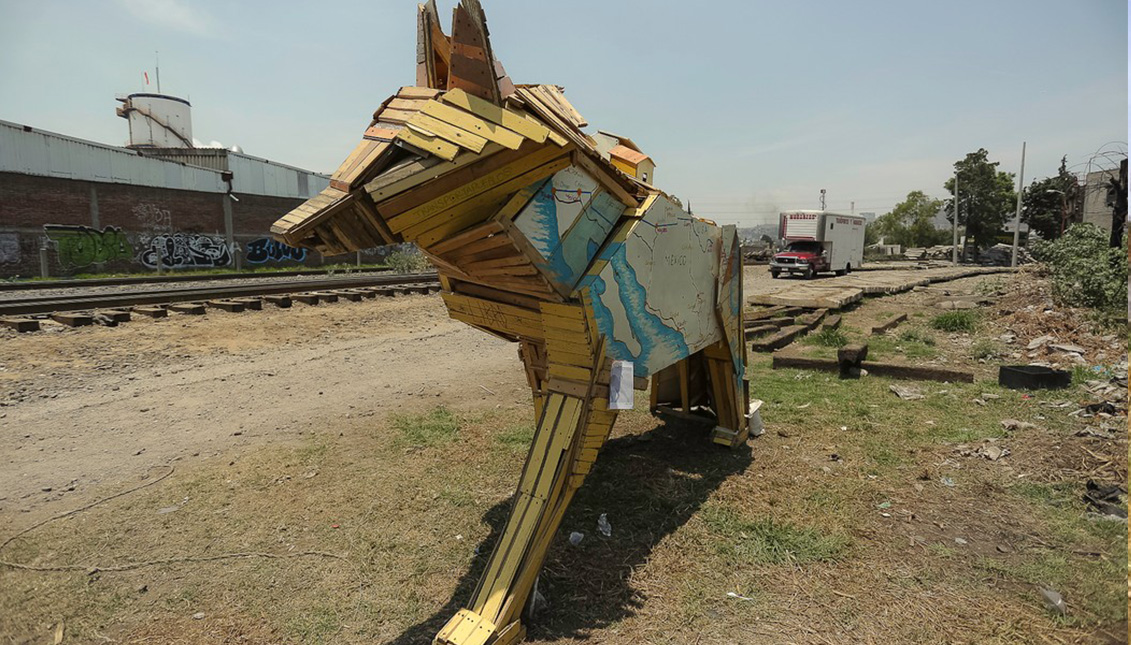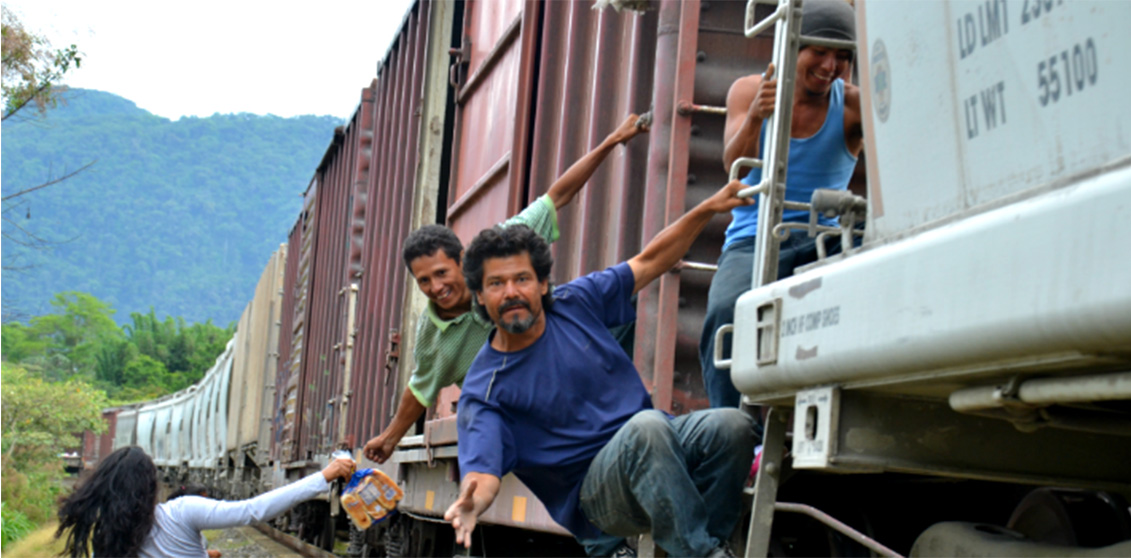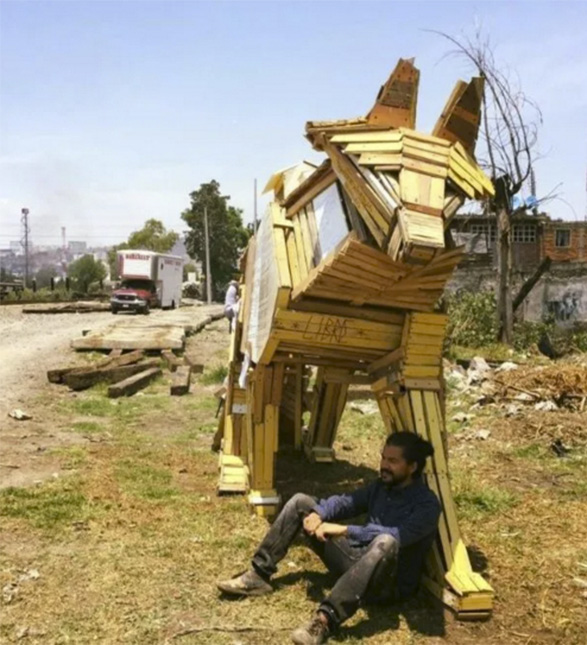
The Path of the Coyote, an Animal of Power for Migrants in Mexico
Five huge coyotes made by artist Libre Gutiérrez inform migrants traveling in the desert about safe routes and where to get water.
There are some 84 refuges for migrants throughout Mexico. What is unusual, is that many of the travelers who arrive in the country fleeing violence in their respective homes in Central America barely manage to locate them. Nor do they know what resources they have or their rights. For them, going into the desert in search of safety is in itself a very dangerous blind walk.
The Tijuana artist Libre Gutiérrez faced this reality while volunteering at a Mexico City refuge, Casa Touchán. He sat down with about eight migrants and began making a list of all the things that any traveler should consider to begin their exhausting and risky journey.
Gutiérrez is a social artist. He works solo and sometimes in collaboration with nonprofit organizations, creating murals that act as community bridges. They are symbols of resistance as well as denunciations of social problems.
This time, he wanted to understand the odyssey of migrants in depth, but knew to do that, he had to become one. There began a journey that would culminate in almost "sorcery" - all art is, in a way, sorcery.
The freight trains that transport migrants through Mexico are known by the fearsome name, 'La Bestia.' The journey is very risky. Many people who start across the track lose an arm, die when they fall from the roof of the wagons, or fall victim to the mafias.
Libre decided to undertake the journey. He needed to understand what it felt like and what those he met were really up against. He spent ten days on the back of 'La Bestia,' along with entire families, heading north.
"We were threatened and treated very well too," he told Hyperallergic. "Whenever the train stopped, we were cautious, but most people came with food and water."
After the experience - cold, hard, and dangerous - the artist created in Tapachula, Chiapas, a mother coyote and her puppy to travel with families and their children, and to also show the female side of the journey. The mother coyote of at least 11 feet is a protector, who carries on her back colorful houses that are also aviaries with flags from Honduras, Guatemala or Ecuador. The countries of origin of the people traveling on La Bestia.
Then he continued to sculpt. He made four more coyotes, also in Tapachula, all part of the series "Transpoartapueblos: Los Resilientes," which he made in collaboration with NOW Art L.

Better known as nocturnal and solitary animals that look like dogs or starving wolves, saying "coyote" on the border is not talking about animals per se, but about guides or human traffickers depending on who you ask.
RELATED CONTENT
For the Border Patrol, coyotes or polleros are smugglers. For the coyotes themselves, all they do is help people cross the desert and get across the border without losing their lives and in exchange for payment.
But Gutiérrez went a little further. For his latest series, "Transportapueblos, Compañero de Migrantes" made this figure into a hybrid between the guide and the power animal that, according to the Native Americans, represents the spirit of life.

A symbol of survival carved into five large sculptures representing coyotes and containing useful information for the migrant, such as carved maps and necessary supplies such as water. And they even have shelves at the back.
"I've always felt more like a sculptor than a painter," said the artist, who used a grant he had just received to create his designs, which he would place along the road through Mexico.
"I hate it when you go to a museum and can't get near the piece," he added. "My sculptures are the opposite, I want people to write on them, to leave messages."











LEAVE A COMMENT: